
As the nation celebrates Azadi ka Amrit Mahotsav (commemoration of 75 years of Indian Independence). The fight against colonial rule in India and particularly in Chhattisgarh constitutes a unique narrative, one which is not marred by violence. Rather a narrative that is full of variegated stories of valor, bravery, Satyagraha, dedication, and sacrifice across the length and breadth of the subcontinent. These stories compose the rich Indian cultural heritage and traditions. Thus, the unsung heroes need not necessarily define the lesser-known freedom fighters. They may, at times, be the leaders whose ideals delineate the Indian value system.
This is an attempt to recall and remember forgotten heroes of our freedom struggle, many of whom might be renowned yet unknown to the new generation. The aim of recreating and bringing forth stories, which lay as faded memories of the past, shall serve as a medium of inspiration and encouragement for the coming generations.
Ratnakar Jha
Ratnakar Jha was born in November 1896 in Anjaniya, Mandla district. His father’s name was Mr. Preetikar Jha and his mother’s name was Mrs. Parvati Bai. Before Ratnakar Ji’s birth, due to his father’s death, he studied in Mandla with his uncle Pandit Chaturbhuj Jha and with his maternal grandfather in Khairagarh. After completing his law studies, Jha came to Raigarh. During the Non-Cooperation Movement, he demonstrated his patriotism by burning his foreign suit. In 1922, Ratnakar Jha started practicing law in Durg. After the Civil Disobedience Movement began in 1930, he started organizing protests and rallies in Durg district.
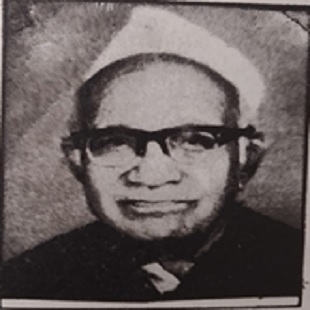
The Jungle Satyagraha was strong in Balod. On September 21, 1930, Mr. Jha was arrested under Section 107 of the sedition law for giving a speech against the government in Balod, and was tried in the Balod court, resulting in a sentence of one year of rigorous imprisonment. During the second phase of the Civil Disobedience Movement, leaders like Ratnakar Jha, Ghanshyam Singh Gupt, V.Y. Tamraskar, and Narsingh Agrawal appealed to merchants not to sell foreign goods and other foreign items. However, some merchants did not stop the sale, leading Mr. Jha and other leaders to hold picketing. In November 1933, Mahatma Gandhi visited Durg. The Durg District Harijan Sevak Sangh was established in 1934, with Mr. Ratnakar Jha appointed as the Vice President. In 1937, he was elected again as the Chairman of the Durg Municipal Council.
Ratnakar Jha initiated a personal satyagraha in Durg, during which he delivered an anti-government speech, for which he was sentenced to six months of rigorous imprisonment. On August 9, 1942, a procession took place in Durg, which the police dispersed violently; however, processions continued to take place in Durg. Ratnakar Jha was arrested in August 1942 and was imprisoned without trial, and he was released from jail in 1944. Ratnakar Jha passed away on June 21, 1973.
E Raghvendra Rao
Dr. E. Raghavendra Rao was born on 4th August, 1889 in Kamathi. After some time, his family came to Bilaspur. His father’s name was Shri Naganna. After studying in Nagpur, he completed his law education from England and started practicing law in Bilaspur from 1914. Young Raghavendra Rao was elected President of Bilaspur District Council in 1916 itself. In 1917, he founded Bilaspur Home Rule League.
In the May 1920 session of Bilaspur District Congress Committee, he protested against the atrocities of the British government and police. In 1920, he participated in the conference of Akhil Bharatiya Vidyarthi Parishad and the National Congress conference held in Nagpur. Under the Non-Cooperation Movement, Rao Saheb left the profession of law. He was also elected President of the Mahakoshal Provincial Congress Committee established at the same time. Through this, he toured the entire region to make the Non-Cooperation Movement successful. When Rao Saheb was presiding over the Raipur District Congress meeting in 1922, Pandit Ravi Shankar Shukla was arrested while stopping the police. In 1921, he presided over the Hindi region’s political conference held in Jabalpur.
After winning the Madhya Pradesh Legislative Council election in 1921, he resigned as per the Congress program. But Raghavendra Rao was in favor of Motilal Nehru and Deshbandhu Chittaranjan Das’s entry into the council. Therefore, he joined the Swaraj Party. Participating in the election in 1923, Rao Saheb got elected to the Madhya Pradesh Legislative Council. After the end of the Swaraj Party, Rao Saheb formed his own new party in 1926 which was named Independent Congress Party which won a total of 8 seats. He formed a cabinet on the basis of majority in Madhya Pradesh along with the liberals. He first became the Education Minister and then the Chief Minister in 1928.
In May 1936, when the Governor of the province went on leave, Rao Saheb was made the acting Governor on account of being the senior home member. He remained on this post till September 1936. In 1937, he again reached the Legislative Council after winning the election. Congress was not forming the government even though it had a majority. Hence, Rao Saheb again became the Chief Minister for 3 months before the Congress formed the cabinet. In July 1941, Rao Saheb was appointed in the Security Council of the Viceroy’s Executive. Rao Saheb died on 15 June 1942 at the age of 53.
Ghanshyam Das Gupta
Ghanshyam Singh Gupta was born on 22 December 1885 in Durg. His father’s name was Shri Gaind Singh and mother’s name was Smt. Bhanumati. He studied law in Raipur, Jabalpur and Allahabad. It was here that he came in contact with the country’s prominent leader Madan Mohan Malviyai, which awakened his interest in the country’s politics, and he organized a strike in the college to protest against the Bengal partition.
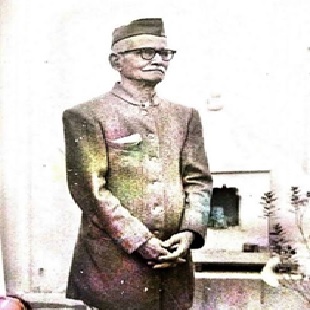
In 1919, he went to the All-India Congress Convention in Amritsar as a representative. Returning from there, he organized a meeting against the Jallianwala Bagh incident. In 1920, he led the representatives of Durg in the Nagpur conference of the Congress. On Gandhiji’s call, he withdrew his name from the Legislative Council elections. In May 1921, Gupta was elected as a permanent member by the Provincial Political Council of Madhya Pradesh to participate in the Indian National Congress on behalf of the province. He held this post for many years.
In 1923, Gupta was elected to the Legislative Council from Durg. After this, he kept getting elected in all the elections. In 1925, he was elected the President of Durg Municipal Council. He criticized the arrest of Pandit Ravi Shankar Shukla in June 1930. He was arrested in August 1930 for breaking the forest law and was sentenced to 6 months and fined Rs 50. He had to serve an additional sentence of 1 month for not paying the fine. On 31 December 1932, the flag was hoisted at Gandhi Chowk. There were three committees of Congress in Madhya Pradesh – Hindi region, Marathi region and Berar committee, which were to be merged and Gupta was made the President of the combined organization. To stop the organization, Gupta was arrested in Kamthi on 28 May 1932. He was fined Rs 1500. When he was unable to pay the fine, his books were sold. In November 1933, the first stop of Gandhiji’s Chhattisgarh tour was Durg. He stayed at Gupta’s house. After this, Durg District Harijan Seva Sangh was formed, whose president was Ghanshyam Singh Gupta. He was also a member of Khadi Udyog Kendra in Durg. It was established in 1936. In the same year, he converted people who had converted to Hinduism through his Arya Samaj organization. In May 1934, Gupta was elected to the Central Legislative Assembly on behalf of Congress. In 1937, he was elected to the Provincial Legislative Assembly from Balod and was elected the Speaker of the Legislative Assembly from 31 April 1937 in the new government. He was made Speaker in all the governments formed during the British rule.
After the dissolution of the Legislative Council in 1939, he was arrested for giving an anti-war speech against the government and was given 1 year of rigorous imprisonment. He remained in Nagpur jail from 29 November 1940 to 10 September 1941. In 1946, he was elected to the provincial assembly and was made the speaker of the Madhya Pradesh and Berar assembly. He worked for social reform and development of education through the Arya Samaj. He was a member of the Hindi transformation committee of the Constitution of independent India. He died on June 13, 1976.
Pt Madhav Rao Sapre
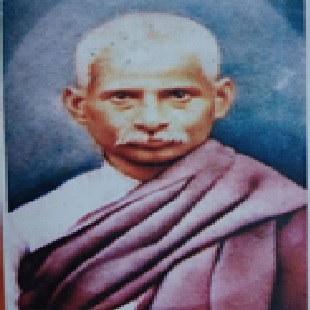
Pandit Madhavrao Sapre was born on 19 June 1871 in village Patharia, Damoh. His father’s name was Shri Kondeshwar Rao and mother’s name was Laxmibai. His father started living in Bilaspur and later came to Raipur. It was here that Sapre completed his schooling. After doing B.A. from Nagpur, Sapre started working in the Desh Sevak Press there. His public life started from here. His love for Hindi language and knowledge of newspaper publishing and editing proved helpful in awakening national social consciousness in Madhya Pradesh.
Sapre was appointed as the teacher of the prince of Pendra Zamindari of Chhattisgarh. While living here, he published a monthly newspaper “Chhattisgarh Mitra” from 2 January 1900 along with his friend and colleague Vamanrao Lakhe and Ramrao Chincholkar, but this newspaper was closed before completing three years due to lack of funds. He spread social awareness by publishing articles on the condition of women and development of education in this newspaper.
After this, in 1906, he started Hindi Granthmala and published articles on national issues like Swadeshi Boycott. In 1905, Sapre met Bal Gangadhar Tilak in the Congress’s Benares session, where he got permission to publish a newspaper based on the Hindi translation of his Marathi newspaper “Kesari”. National consciousness will develop rapidly through Tilak’s ideas. With this idea, he bought Nagpur’s Desh Sevak Press and started publishing a weekly newspaper named “Hindi Kesari” from 13 April 1907. This paper gained a lot of fame in Madhya Pradesh. Its number of subscribers had increased to more than 3000. But the government considered two articles published in it as treason and arrested him on 21 August 1908. Due to family pressure, he had to close the press accepting his mistake, but he continued his struggle against the British rule. He translated ‘Dasbodh’ into Hindi and started a girls school in Raipur in 1913. In August 1920, he collected donations for the Tilak Swaraj Fund by touring the entire province. In 1921, he played a key role in establishing a national school by collecting ten thousand rupees from the affluent class. In 1920 itself, the Hindi newspaper ‘Karmaveer’ was published due to his efforts. He died on 23 April 1926.
Dr Khubchand Baghel

Dr. Khubchand Baghel was born on 19 July 1900 in Pathri village of Raipur. His father’s name was Judawan Singh and mother’s name was Ketki Bai. He received his education from Raipur Government School and while studying medicine in Nagpur, he received his LMP degree. He participated in the Jhanda Satyagraha in 1923. While working as a government doctor from 1925 to 1931, he came in contact with the national leaders of Chhattisgarh. In 1930, Dr. Baghel, despite being a government employee, violated the forest law in the Civil Disobedience Movement and supported the Satyagrahis on 10 October 1930 and started leading them. When he received a notice from the government, he resigned from his job in 1931 and became a full-fledged Satyagrahi. Khubchand Baghel became an inspiration for the rural people of Chhattisgarh. Due to his influence, men and women from many villages participated in the movement.
In the second phase of the Civil Disobedience Movement in 1932, Mahant Laxminarayan Das and Nandkumar Dani were arrested along with Dr. Baghel on 15 February 1932. After this, his mother Ketki Bai and wife Raj Kunwar were also arrested while picketing. After being released from jail in 1933, he started the work of Harijan upliftment on the call of Gandhiji. He was appointed the minister of the Provincial Harijan Seva Samiti by the Congress Committee. Dr. Khubchand Baghel was also a good litterateur. He attacked social evils and spread patriotism by writing plays like Karamchhadha, Jarnail Singh, Unch-Neech, Ledga.
He also received training in the Satyagraha training camp from 1 May to 7 May 1939. As soon as the Individual Satyagraha Movement started in 1940, he again became active in political activities and started spreading anti-war sentiments by traveling around. Baghel used to tour villages by forming a group of youth for social and political awakening through his plays. At the time of Quit India Declaration in 1942, Baghel, Pandit Ravi Shankar Shukla, Shivdas Daga, Mahant Laxminarayan Das and other leaders went to Mumbai to listen to Gandhi ji’s speech. While returning from there, other companions were arrested in Malkapur on 10 August, but Baghel escaped from the police and reached Raipur. Here, while going underground and distributing anti-government revolutionary pamphlets and giving anti-British speeches, he was finally arrested on 23 August 1942. He died on 22 February 1969.
Vamanrao Lakhe
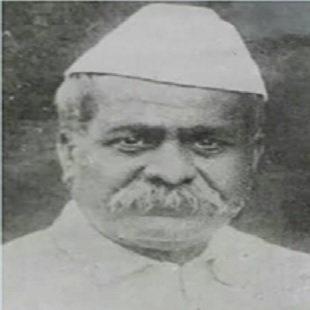
Vamanrao Lakhe was born in Raipur on 17 September 1872. His father’s name was Baliram Lakhe. His elder brother Ramrao Lakhe used to go as a representative in the conferences of the Indian National Congress and was also a member of the Raipur District Council. Hence Vamanrao was familiar with the conditions of the country. He was an associate of Pandit Madhavrao Sapre, the editor of Chhattisgarh Mitra, the first newspaper of Chhattisgarh region, published in 1900. He was elected in the elections of Raipur District Council Municipality. In 1916, he received the title of Raisaheb.
Despite being in touch with British officials, he was concerned about the condition of the common people of the country. In 1912, he along with Raibahadur Banshilal, Abirchand, Raisaheb J.N. Sarkar, Raisaheb Thakkar, established a cooperative bank by the name of Raipur Cooperative Bank, whose objective was to save the farmers from indebtedness. He remained associated with this organization till 1948. He started participating in political activities from 1918. He played an important role in organizing the political council of Dhamtari. He was a part of the Congress session of Nagpur in 1920. Under the non-cooperation movement, he renounced the title of Raisaheb. In return, the public gave him the title of ‘Lokpriya’ and he was made a minister in the National School Management Committee.
In 1922, he was the organizer of Raipur District Congress Committee and was elected the president of this committee. At the same time, Lakhe was also made the main propagator of Swadeshi promotion. Independence Day was also celebrated in Raipur on 26 January 1930. The flag was hoisted at many places. A meeting of the Raipur Congress Committee was held on 3 February 1930. After Gandhiji’s call, breaking the salt law and other programs started. On 4 June 1930 in Raipur, Yatiyan Lal and Vamanrao Lakhe incited people against the police and asked them to boycott them socially. On 28 May in Arang also they asked to end the hooliganism of the police. Hence, on 25 June 1930, he was arrested and sentenced to 1 year imprisonment or a fine of 3000 rupees. After his speeches, people lost their fear of the police and at many places he was attacked by the public. Lakhe had an active role in organizing the Swadeshi exhibition on Gandhiji’s arrival in November 1933. On 21 January 1941, he was arrested for giving an anti-war speech and raising slogans in Simga under the Individual Satyagraha and was sentenced to 4 months. In 1942, even after being over 70 years old, he played an active role in the Quit India Movement and distributed pamphlets against the government. Along with these works, he continued to promote cooperative institutions and protect farmers from moneylenders. He died on 21 August 1948.
Narayanrao Meghawale
Narayanrao Vitthal Fadnavis, popularly known as Narayanrao Meghawale, was born on 25 October 1893 in Kurud Dhamtari. His father’s name was Vitthal Rao and mother’s name was Rukmani Bai. He was called Meghawale because of his Malguzari village Megha and Mujgahan. His mother was from Nagpur, so he was very much influenced by the activities of Nagpur and from his early youth, he got involved in the national program.
Meghwale started promoting Khadi clothes from 1905 itself under the partition of Bengal, Swadeshi movement. Pandit Ravishankar Shukla, Sundarlal Sharma and other leaders also supported him. He had to face huge losses in promoting Swadeshi clothes. As a result, he had to raise money by selling 2 Malguzari villages and a part of his house in Dhamtari.
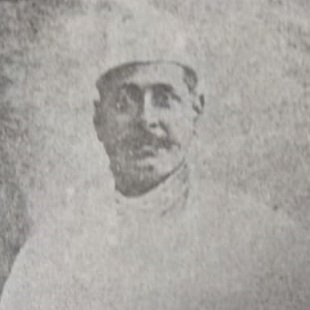
To promote nationalist sentiments, he started Ganesh Utsav in Chhattisgarh on the lines of Maharashtra in 1910 from Dhamtari. He successfully led the Kandel Canal Satyagraha along with his companions Pt. Sundarlal Sharma and Natthuji Jagtap. This was the first Satyagraha of the country for which Mahatma Gandhi came to Chhattisgarh. In 1922, he was sentenced to 1 year and 8 months in the Nagari Sihawa Jungle Satyagraha. In 1923, he went to the Congress session in Kakinada on foot and created public awareness in every village. Due to his active participation in the Non-Cooperation Movement, the government could not auction the contracts of intoxicants.
In 1930, he broke the Salt Law by making salt in Dhamtari. At the same time, on 1 May 1930, he opened Satyagraha Ashram in his own house in Dhamtari for training in Satyagraha, where education on character, morality, nationalism, honesty was given along with free accommodation and food. The training period was of one week. Here, 1300 people received training in Satyagraha in 3 months. In June of the same year, he successfully led the jungle Satyagraha of Gatthasilli along with Shobharam Devangan etc. In August 1930, he also took over the leadership of the jungle Satyagraha of Rudri Navagaon and was appointed the first dictator. He was arrested on 22 August itself. He was sentenced to 1 year imprisonment and a fine of Rs 250. In 1933, on Mahatma Gandhi’s second visit to Chhattisgarh, he presented him a bag of Rs 50 for the Harijan Fund. He was engaged in social reform and upliftment with Pandit Sundarlal Sharma. He died on 24 October 1938 in Raipur.
Yatiyatan Lal
Yatiyan Lal was born on 11 November 1894 in Bikaner (Rajasthan) and in his childhood a Jain saint brought him to Raipur where he received his education. He joined the national movement for patriotism and service to humanity and in 1921 he joined the Indian National Congress and participated in the District Congress Conference. The very next year in 1922 he was elected Vice President of Raipur District Congress and President in 1924-25.
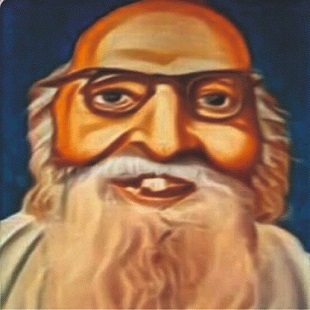
During the Civil Disobedience Movement of 1930, a publicity board was formed under the coordination of Yatiyan Lal to propagate the principles of Congress in which he was also entrusted with the responsibility of publicity along with Thakur Pyarelal, Shankar Rao Ganodawale, Maulana Rauf etc. During the same period on 23 April 1930, he staged a sit-in in liquor shops while propagating against alcohol consumption. On 9 September 1930, he led the Tamora Jungle Satyagraha in Mahasamund Tehsil and was arrested along with Shankar Rao Ganodawale and sentenced to 3 months. In 1932, during the Civil Disobedience Movement in Raipur, he was arrested while staging a dharna in front of Kika Bhai’s shop. In 1942, he was again arrested on 10 May and sent to Buldhana Jail when he was going to participate in the Bombay session of the All India Congress Committee. He was arrested from Malkapur Station. On 16 August, he was sent to Nagpur Jail where he remained for 3 years and 15 days.
Yatiyan Lal did special work for Harijan upliftment and was a member of the working committee of the Satnami Ashram established by Pandit Sundarlal Sharma in 1924. He campaigned against animal sacrifice, funeral feasts, child marriage, mismatched marriages and for cow protection and protection of religion and culture. He died on 4 August 1976 in his ashram at Mahasamund after a prolonged illness.
Natthuji Jagtap
The Jagatap family, which came to Chhattisgarh during the Maratha rule, held high positions in the Bhonsle rule. This prestige remained even after the end of the Maratha rule because they were still the landlords of many villages. Nathuji Jagatap was born on 15 April 1881 in Dhamtari. His father’s name was Hinduji. He was imbued with nationalist sentiments from the time of his schooling. He came in contact with patriots like Narayanrao Medhwale, Sundarlal Sharma and got inspired to join national movements and also started attending Congress sessions. He was so intoxicated with patriotism that he gradually stopped entertaining British officers and started welcoming patriotic leaders and workers. The result was that the huge building became the meeting place of patriots and he himself gave up the pomp and show of being a landlord and became a fighting leader for the country.
Gandhiji’s influence was visible in Chhattisgarh since 1917. After the Home Rule Movement subsided, a provincial political conference was held in Raipur on 26 August 1917. Jagtap came in contact with the big leaders of the province, which increased his activism. With his cooperation, the first tehsil political conference was held in Dhamtari in 1918. In the same year, he also renounced the title conferred by the British. Renunciation of the title before the non-cooperation movement was a good example.
The Jalianwala Bagh massacre deeply hurt his heart, and he became active before the second national conference in 1919 in Dhamtari, which was held under the chairmanship of Dadasaheb Khaparde. After this, he supported the farmers in the Kandel Canal Satyagraha. Along with Pandit Sundarlal Sharma, he also gets the credit for Gandhiji’s arrival in Dhamtari in 1920. Gandhiji also rested in his house. In 1920, he went to the Nagpur session of the Congress as a special worker. When he participated in the Nagri Sihawa jungle satyagraha, the police caught him and left him in the jungle, from there he had to come back on foot through the dangerous jungle. In 1920 he was elected President of Dhamtari Tehsil Khilafat Committee. In 1930-32 he participated in the forest movement of Gatta Silli and Rudri Navagaon. Due to the Rudri jungle satyagraha, he was given a sentence of 6 months in jail. Thus, through the jungle satyagraha he created national awakening in the tribal group. This struggling leader died on 27 May 1937.
Pt Sundarlal Sharma

Pt. Sundarlal Sharma was born in a village of Chandrasur near Rajim and spent most of his life in Raipur. He was under influence of Mahatma Gandhi, and, in particular, he organized Gandhi’s visit to Raipur in 1920. At the time, he has already been active in the local level politics, with the goal of implementing social reforms such as abolition of castes and integrating untouchables into society. Later, he entered politics at the national level and represented Madhya Pradesh in the Indian independence movement.
In 1920, Sharma started the Kandel Nahar Satyagraha in Kandel, Dhamtari. This was an act of civil resistance against an irrigation tax by the British Raj. In 1921-22 he was arrested by the authorities, which is considered to be the first arrest in Chhattisgarh related to the independence movement.
Thakur Pyarelal
Thakur Pyarelal Singh was a lawyer by profession, an Indian freedom fighter against British rule and the founder of labour movements in Chhattisgarh. He led three workers’ movements in Rajnandgaon State in 1919-1920, 1924 and 1937. He was also conferred with the honorary title of “Tyagmurti”, which means “epitome of sacrifice”.
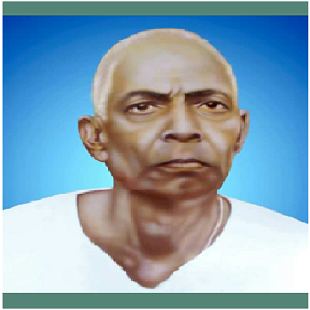
In 1916, he met the cotton mill workers based in Rajnandgaon. He learned that the workers were mistreated by the British officers and that they had to work 12 hours each day. Their plight made Thakur Pyarelal start an organization to help the workers. In 1909 he began Saraswati Pustkalaya in Rajnandgaon. In 1920, Rajnandgaon Mill Workers, led by Thakur Pyarelal Singh started a strike that lasted more than 37 days. This was India’s first long-term strike, and it managed to reduce the worker’s working hours. With the creation of the non-cooperation movement by Mahatma Gandhi, he left his legal practice and began to campaign for Indian independence from Britain. Many students left Raj-sponsored public schools during the non-cooperation movement, and many lawyers abandoned their practices. Many Indian national schools were established during this period under Thakur Pyarelal’s supervision, including the Madhyamik School in Rajnandgaon.
Babu Chhotelal Shrivastava
Babu Chotelal Shrivastava was a freedom fighter, born on 28th February 1889 in village Kandel, Dhamtari district. He was a true devotee and follower of Mahatma Gandhi. He started participating in national movements by coming in contact with Pt. Sundarlal Sharma and Pt. Narayanrao Meghawale. In the year 1915, he established the Srivastava Library. His house in Dhamtari was a major center of the freedom struggle in Indian independence movement. Also, he was among the principal organizers of the Dhamtari Tehsil Political Council in the year 1918.
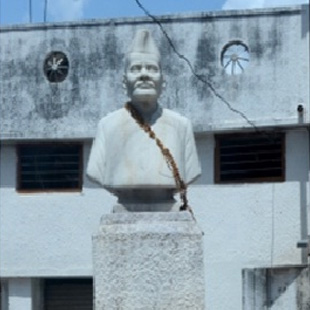
Chotelal Srivastava started Kandel Nahar Satyagraha agitation, a rebellion against the Britishers who had imposed too many taxes on farmers and perpetrated cruelty to recover the levy. With the agitation gaining momentum, Mahatma Gandhi had visited Kandel village on 21st December 1920. During his visit, Mahatma Gandhi praised the leadership and active role of Babu Chotelal Srivastava in the freedom struggle. Gandhiji had said that this is the first Satyagraha in the fight against British rule.
Babu Chotelal organized the peasants against the tyranny of the British Raj. This was the first unprecedented demonstration of organized manpower against English imperialism. In the year 1921, he established Khadi Production Center for Swadeshi movement. The Jungle Satyagraha was held in Sihawa in 1922 under the leadership of Shyamlal Som where Babu Chhote Lal Shrivastava gave full support in that Satyagraha. He was arrested and sent to jail.

 Home
Home Syllabus
Syllabus Contact Us
Contact Us




